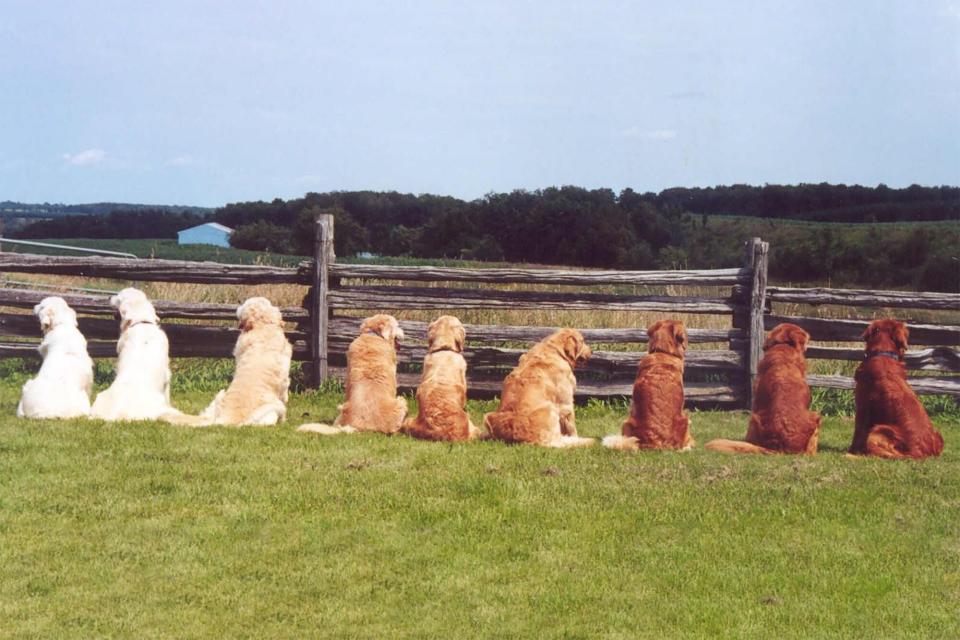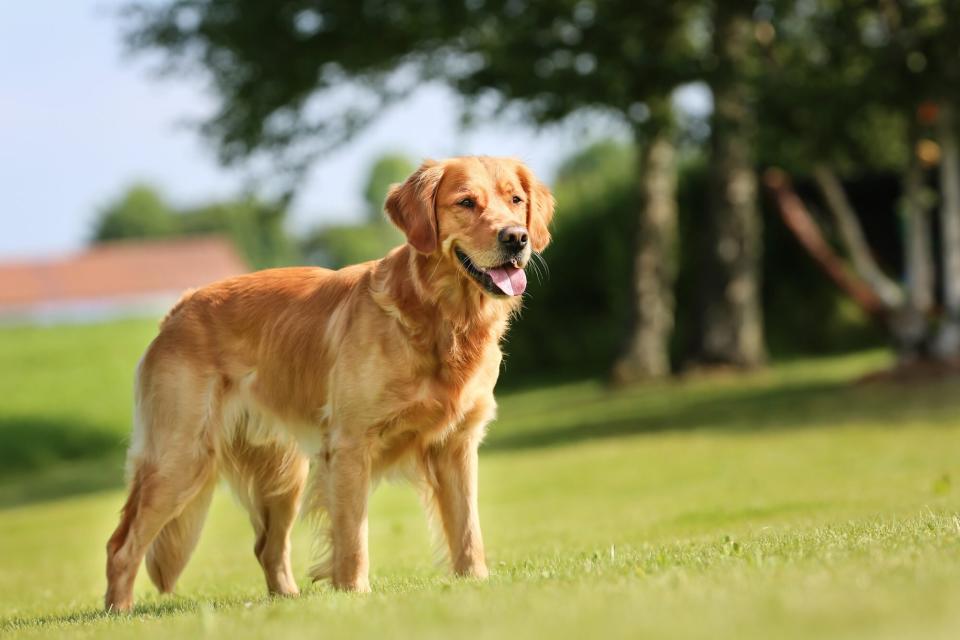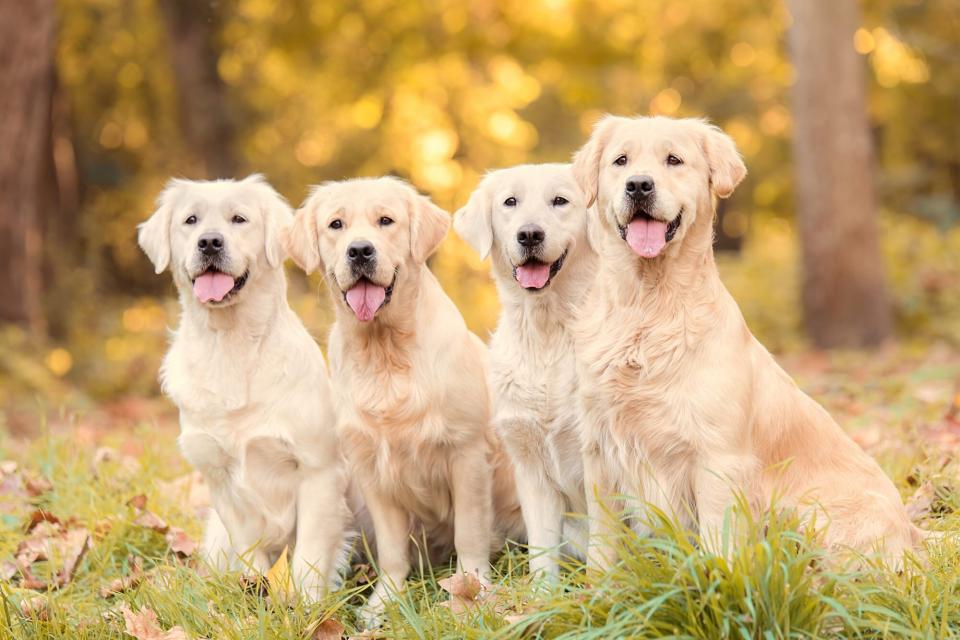More To Love! There Are Three Different Types of Golden Retrievers—Here's How To Tell Them Apart
Did you know there are three distinct types of golden retrievers? Not only do these breed variations hail from different countries, but also have their own special physical characteristics to generally help tell them apart. Not that a golden would ever be in a doggie line-up. She's far too congenial and well-behaved to pull off a heist!
We're careful not to say a breed is always this way or that. Nevertheless, golden retrievers are, for the most part, extremely good-natured, loving, and terrific companions for humans and other pets, large or small. Okay, sometimes they get a little frisky, but what dog doesn't?
Viive Tamm is the board chair for Golden Rescue Canada, based in Barrie, Ontario. She says the three types of golden retrievers share some other common characteristics, too. "We call them 'goofballs' because they're goofy and fun," she says. "They're generally great with kids because they have a soft mouth—they're not nippers. They want to be with their families, so are game for anywhere the family wants to go. They're ideal cottage, camping, and boating dogs, and they love the water."

Courtesy of Golden Rescue Canada / Liz Russell
What Are the Three Different Types of Golden Retrievers?
Jo Myers, DVM, of Salida, Colo. is a telehealth practitioner on Vetster. She points out that when you consider their delightful personalities, trainability, and beauty, it's no wonder the three types of golden retrievers are loved around the world.
RELATED: Meet Cooper, the Golden Retriever Leading Hikes at This Vermont Resort
"The folks who breed and show golden retrievers are some of their biggest fans, passionate about doing all they can to improve the breed," she says. "This means selecting dogs who meet the standard defined by the kennel club they show with, as well as doing what they can to select against the health issues goldens are predisposed to." They're all still the same breed, but with different appearances, as enthusiasts in the United States, Great Britain, and Canada have preferences for certain physical attributes.
Tamm provides a snippet of breed history. "The golden retriever was created in the mid-1800s by a Scot [Dudley Marjoribanks, the first Lord Tweedmouth], who was looking for an ideal gundog," she says. "He bred his yellow retriever with a breed that's now extinct—the Tweed water spaniel. Bloodhound and Irish setter were added to the mix." There's also a little flat- or wavy-coated retriever in the lineage. This makes for a terrific blend of good dogs! Let's take a closer look.
American Golden Retriever

Mikkel Bigandt / Adobe Stock
What we know is the American golden first bounded onto the scene in the mid-1970s when President Gerald Ford brought his dog, Liberty, to the White House. Today, they consistently rank in the top 10 of the American Kennel Club's most popular breeds, especially for families. Tamm says this variation is usually more lanky, less stocky, and has more 'feathery' fur.
Canadian Golden Retriever

Patricia Marroquin / Getty
The Golden Retriever Club of Canada notes that Archie Majoribanks, the son of the breed's founder, imported goldens as early as the 1880s, but the first registration of a Canadian golden happened in 1927. Tamm says you'll spot their difference because they're usually darker in color, taller, and leaner than the other two, with a thinner coat.
English or British Golden Retriever

SasaStock / Adobe Stock
The heritage origin of the other two breeds come from this one. The United Kennel Club states that the British golden retriever "was bred by British aristocrats to be a dual-purpose dog, able to retrieve waterfowl and upland game birds and also to be a companion." Tamm notes this golden is heavier and stockier, with a full coat, wider, shorter muzzle, and a blockier forehead.
RELATED: 221 of the Best Golden Retriever Names
Different Colors of Golden Retrievers
As the picture above demonstrates, the different types of golden retriever coats truly run a beautiful spectrum! With so many heritage breeds influencing their color hues (so if you see a red golden retriever, that's probably her Irish ancestor popping up!), you might think at first that it's challenging to tell them apart, but here are some helpful hints.
American golden retrievers are generally more honey-colored, a little more true to what people often perceive as 'golden'.
Canadian golden retrievers usually have the darkest color of the three variations, perhaps with a bit more red.
English cream-colored golden retrievers are pretty standard, with a slight range of blonde.
"There are no two Goldens the same—not in body shape nor coloring," Tamm says. "Just like humans, all vary in their intelligence, personality, and health."

